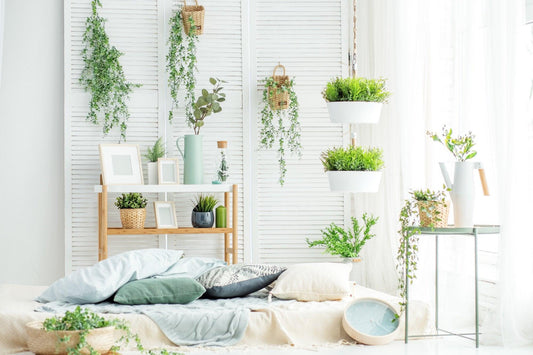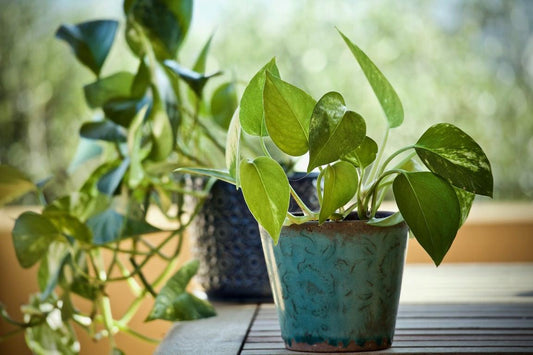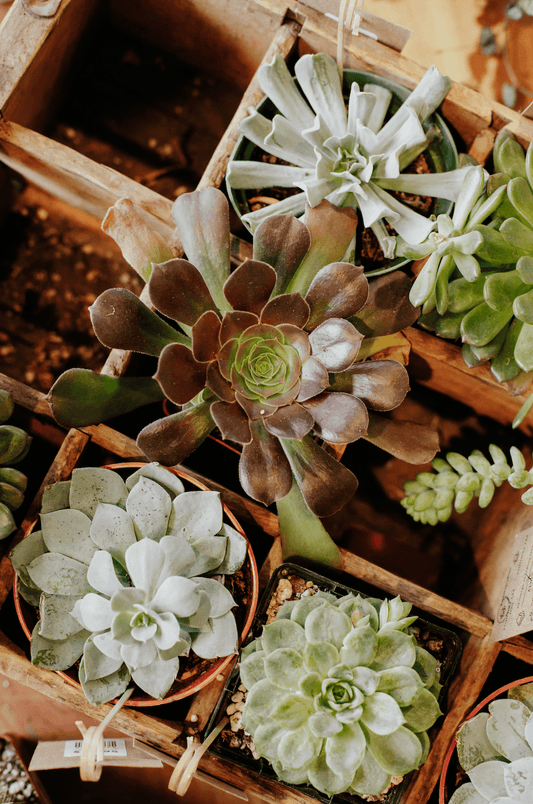As the snow begins to melt and the sun starts shining, it's time to start thinking about how to care for your indoor plants in the spring. With the warmer temperatures and longer days, spring is the perfect time to give your indoor plants some extra attention and prepare them for the summer months. In this blog post, we'll discuss how to care for your indoor plants in the spring, including how to move your plants outdoors.
Supplies You May Need:
Steps to Keeping a Happy Plant in the Spring:
1. Repotting
Spring is an excellent time to repot your indoor plants. As the days get longer and the temperatures rise, your plants will begin to grow more rapidly. Repotting will give them the space they need to continue growing and thriving. Choose a pot that is one size larger than the current pot, and use fresh potting soil to give your plant the nutrients it needs.
2. Pruning
Pruning is an important part of plant care in the spring. Remove any dead or damaged leaves, and trim back any overgrown stems to encourage new growth.
3. Watering
As the days get warmer, your plants will need more water. However, be sure not to overwater, as this can lead to root rot. Water your plants when the top inch of soil feels dry to the touch, and be sure to use room-temperature water.
4. Fertilizing
Spring is a great time to fertilize your indoor plants. Choose a fertilizer that is specifically formulated for indoor plants, and follow the instructions on the package.
Moving Your Indoor Plants Outside:
Moving your indoor plants outdoors can be a great way to give them a change of scenery and provide them with more natural light. Here are some tips for moving your plants outdoors:
1. Gradual Transition
Before moving your plants outside, it's important to transition them gradually. Begin by placing them in a shaded area for a few hours each day, gradually increasing the amount of time they spend outside.
2. Proper Placement
Once your plants are outside, be sure to place them in a spot that receives the appropriate amount of sunlight. Be mindful of the temperature, as some plants may not be able to tolerate extreme heat or cold.
3. Watering
Outdoor plants will need more water than indoor plants, so be sure to water them frequently, especially during the hot summer months.
4. Pest Control
Outdoor plants are more susceptible to pests and diseases than indoor plants. Keep an eye out for any signs of pests, such as spider mites or aphids, and take appropriate action to prevent infestations.
Indoor Plants That Can Be Moved Outside:
Some indoor plants can thrive outdoors in Colorado's climate. Here are a few plants that are suitable for outdoor conditions:
Snake Plant: Snake plants are hardy and can tolerate a wide range of conditions, including outdoor conditions in Colorado's warmer months. They are drought-tolerant and can handle direct sunlight.
Spider Plant: Spider plants are another hardy plant that can handle outdoor conditions. They prefer partial shade and can tolerate cooler temperatures.
Aloe Vera: Aloe vera is a succulent that can handle the dry and hot conditions in Colorado. It requires plenty of sunlight and well-draining soil to grow properly.
Indoor Plants That Should Not Go Outside:
Not all indoor plants can handle outdoor conditions. Some plants are more sensitive to temperature fluctuations, wind, and direct sunlight. Here are a few indoor plants that should not be moved outdoors:
Ficus Trees: Ficus trees are sensitive to changes in temperature and can suffer from leaf drop if exposed to direct sunlight or cooler temperatures.
Rubber Plant: Rubber plants prefer stable temperatures and humidity levels and can suffer from leaf drop if exposed to outdoor conditions.
Boston Fern: Boston ferns prefer cooler and more humid conditions than what is typically found outdoors in Colorado's warmer months.
Caring for your indoor plants in the spring is an important part of ensuring their health and longevity. By following the tips outlined in this post, you can help your plants thrive as the weather warms up. Moving your indoor plants outdoors can be a great way to provide them with more natural light and fresh air, but be sure to transition them gradually and provide them with proper care to ensure their success.
For more helpful tips on plant care, follow us on Instagram @topterracotta. You can also subscribe to our mailing list for news, updates, helpful content, and exclusive deals.




